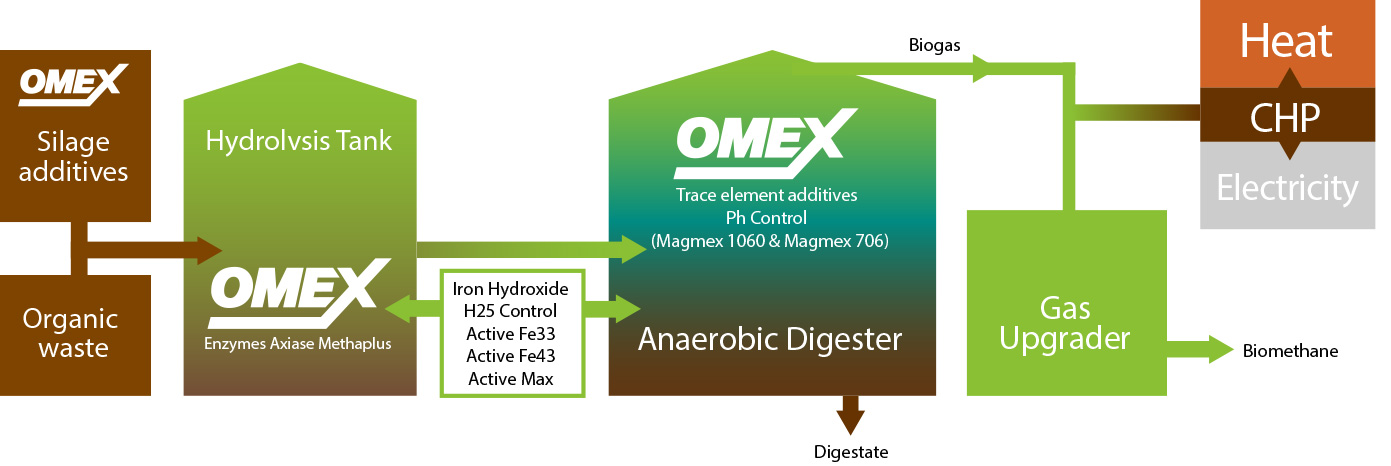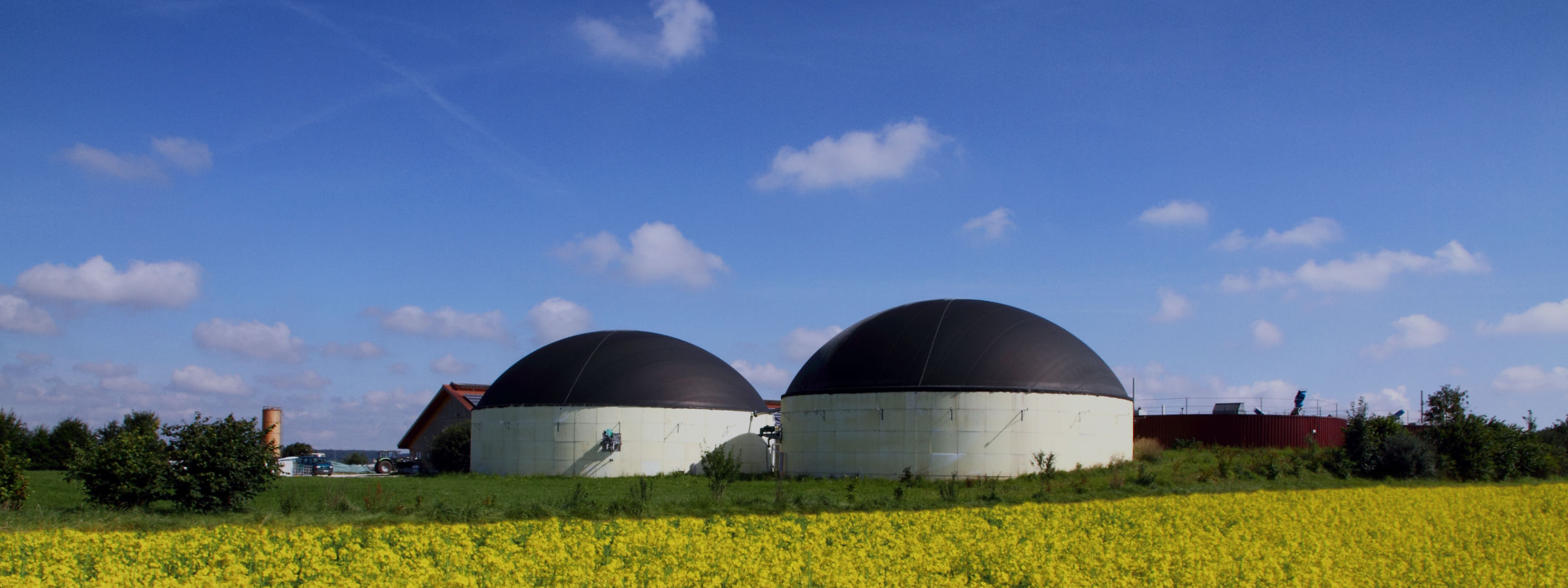Anaerobic digestion is a process carried out in many industries, particularly within agriculture and waste treatment industries. It involves the controlled breakdown of organic materials such as livestock manure, crop residues, and food waste in an oxygen-free environment. Rather than allowing these materials to become environmental pollutants, anaerobic digestion transforms them into valuable resources — most notably biogas and nutrient-rich digestate.
At OMEX Environmental, we have developed a comprehensive range of tailored solutions designed to support and enhance the performance of anaerobic digestion systems. These products help maintain stability, efficiency, and maximum energy output, especially in systems dealing with variable or challenging feedstocks.
One of our key products, Nutromex® TEA provides a balanced supply of essential trace elements and nutrients that are critical to optimise microbial growth within anaerobic digestion systems, ensuring the efficient breakdown of agricultural and organic waste and maximising methane production.
Our enzyme solutions like Axiase & Viscomex play a vital role in accelerating the hydrolysis stage of digestion. These enzymes target insoluble and fibrous materials, reducing viscosity and enhancing substrate flow. This not only makes the system easier to manage but also increases the availability of material for microbial conversion, ultimately improving biogas production efficiency and reducing overall digestate volume.
Products like Active Fe and Nutromex® TEA can optimise energy generation from agricultural waste, and can also minimise hydrogen sulphide levels, preventing corrosion, improving the life of components, and maintaining equipment efficiency. Together, these solutions form part of a wider strategy to help operators extract maximum energy and nutrient value from organic waste, making anaerobic digestion not just sustainable, but also a highly efficient tool in modern agricultural and waste management practices.
The Outputs Of Anaerobic Digestion
Anaerobic digestion produces biogas and digestate.
Biogas Yield
Trace element additives, like Nutromex® TEA, supply essential nutrients needed within the anaerobic digestion process for maintaining microbial activity and improving stability.
Without these supplements, the enzymatic systems will fail to function effectively, which leads to a decline in the efficiency of the digestion process and a build-up of volatile fatty acids. A resultant imbalance in the pH and finally digester failure can then occur.
Hydrogen sulphide is commonly produced within the biogas process. Reduced H2S levels with the correct supplements improve the life span of filters, sensors and other equipment but most importantly it allows sites to continue to export and generate income.
Using Omex’s Active Fe range helps control and maintain the hydrogen sulphide at a lower level.
Digestate
A more efficient process, helped by Nutromex TEA, improves the quality of the digestate by lowering VFAs and the residual methane potential. This, in turn, leads to reduced odour emissions.
The availability of nitrogen, phosphorus and potassium within the digestate is also improved.
This nutrient-rich digestate can be employed with OMEX’s fertiliser ranges to produce ideal conditions for crops.
To help with the performance process and for anaerobic plants to operate effectively they require a variety of nutrients for the micro-organisms to grow and function properly. See OMEX range of trace element additives.







